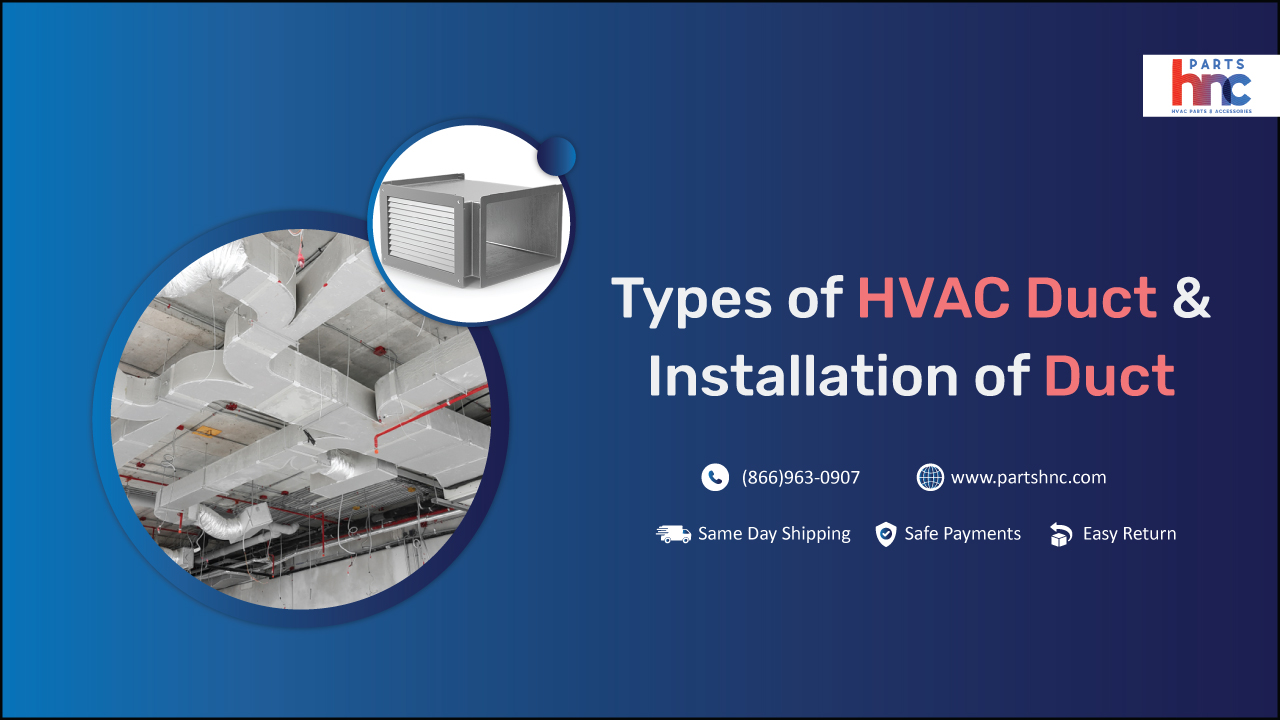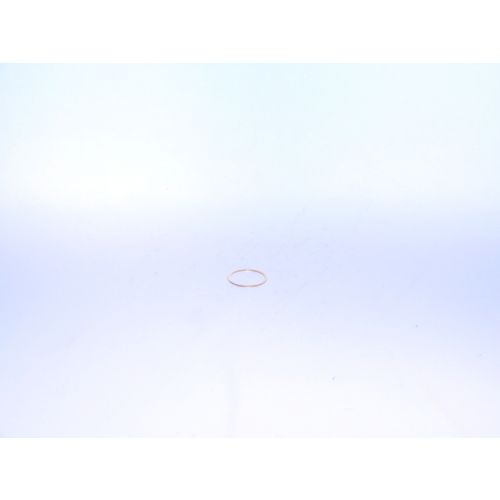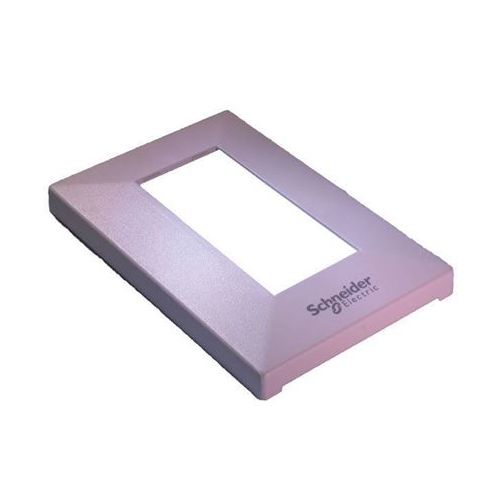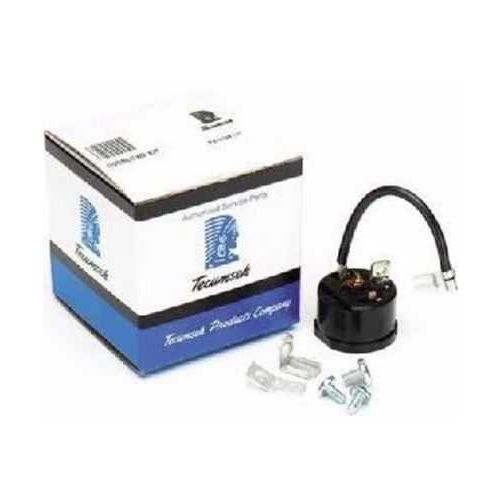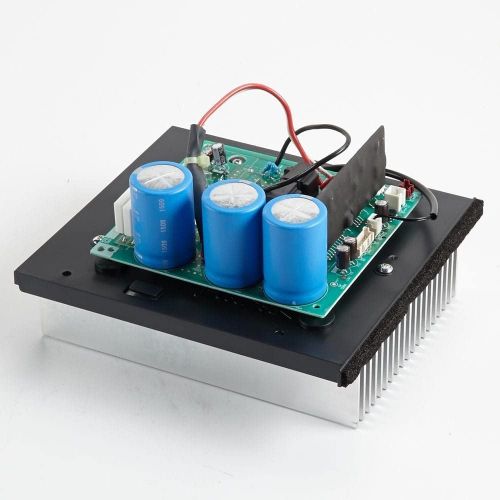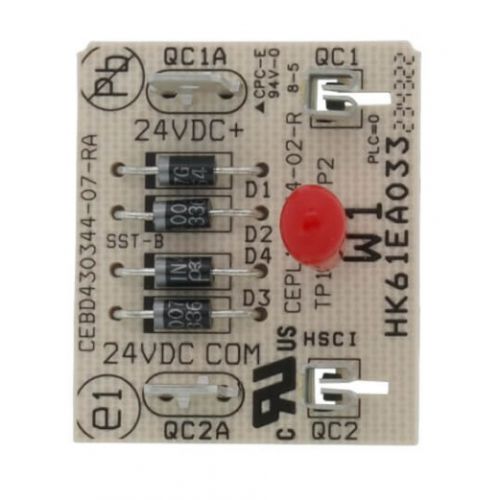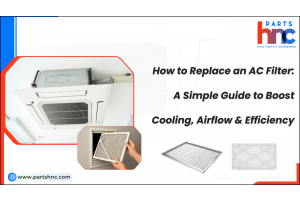What is an HVAC Duct, Different Types and Installation of Duct
Keeping your home cool in the summer and warm in the winter can be a challenge without the right air ducts. But what is an HVAC duct? Ducts are pipes that transport air from one place to another. They are found in all kinds of systems, including HVAC, industrial and commercial refrigeration, and heating. These vital pieces of equipment need to be replaced periodically as they age. When it comes to the best brands, there are a few that stand out from the rest. Marley, Williams, and Johnson have been around for decades and have earned the trust of many commercial business owners.
If you need to buy or install air ducts for your home or office, it is important to know which types and sizes are best for you. Read on to learn how duct work, what they are made of, air duct cleaning process. Knowing these HVAC duct facts before you start planning can save you money, effort, and time.
Table of Contents
Duct vs Ductwork - What's the difference?
A majority of us get confused with the words "duct" and "ductwork". Here’s how duct work: Ducts are the pipes that carry air from the furnace to each room in your home.
Ductwork is a larger, more complex system that carries air from the furnace to all of the rooms in your home. Here's what the difference is between ducts and ductwork:
| Duct | Duct Work |
| Carry air from the furnace to each room in your home or commercial building | Part of the HVAC system that includes all the pipes, ducts, vents, registers, and fittings that carry air from one place to another inside a commercial building |
| Are made of metal and plastic | Usually made of metal and plastic, though may be made of fiberglass |
| Are used for heating, ventilation, and air conditioning | Usually found in rooms where there is a furnace, water heater, etc |
| Can be insulated with fiberglass or other materials | May contain vents to allow airflow |
| Are usually round or rectangular pipes with a hole at one end for airflow | It is either open at one end to the atmosphere or closed with a sloping wall facing into it. |
| Can be single ducts or multi ducts depending on how many rooms they serve | Can contain one duct or many depending on how many rooms they serve |
To maintain the ideal indoor temperature, homeowners rely on their domestic HVAC system. Many people, however, are unaware of how important ductwork is in preserving a home's indoor air quality. Let’s take a look at the main components of residential ductwork.
What are the main components of residential ductwork?
Residential Ductwork needs a number of essential components. To diagnose the duct issues and effectively communicate any problems to your maintenance specialist, it can be helpful to have some understanding of the inner workings of your air conditioning and heating system. Following are some HVAC duct parts necessities and operations you should become familiar with:
- Trunks and duct pipes
The duct pipes and trunks are the main pathways for air to move throughout your commercial buildings or homes. Straight from the furnace, duct trucks, which are typically composed of steel, branch off. Each room in your home is connected by duct pipes that extend from the duct trunks. Most duct pipes are made of galvanized steel, however, some are made of flexible aluminum, allowing them to bend and conform to a specific location.
Your complex system includes ducts that are used to distribute air around your house in addition to pipes and trunks. For instance, stack boots and heads aid in vertical air movement, which enables better air distribution.
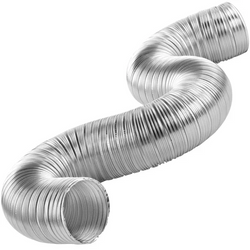
- Transitions
The "transition" of duct pipes and trunks is assisted by duct transitions. Transition components make it possible for air to move through your ducting effectively and efficiently. An important kind of transition is a take-off, which moves air from the duct trunk to specific pipes. Their structure aids in maximizing effective airflow, which can save energy expenses. Turning vanes and cleats are other frequent examples of transactions.
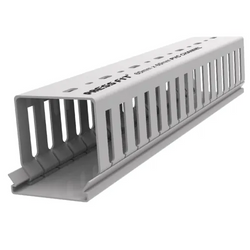
- Plenum
One of the most crucial components of a residential HVAC system is a plenum, also referred to as an air distribution box. Bringing in and distributing air are its primary tasks. Plenums fall into one of two categories:
Return plenum boxes: collect air from the return vents and deliver it to your HVAC system so it can be heated or cooled again.
Supply plenum boxes: connect to your furnace, heat pump, or air conditioner to force the freshly conditioned air into the ductwork.
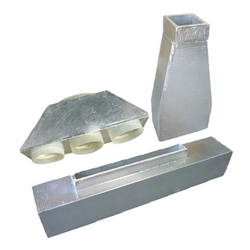
- An air handling unit (AHU)
The air handling unit (AHU) is a sizable metal box that is joined to the ductwork and houses the blower fan, dampers, heating and cooling elements, and air filter.Then where are dampers located? Dampers can be found in ducts or air handling units to regulate airflow. When the air is at the right temperature, the fan helps distribute it through the ducts.
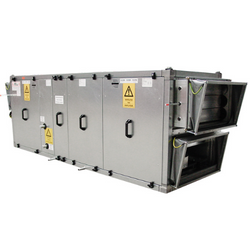
- Flues
HVAC flues are designed to move air outdoors in a manner similar to a chimney flue. When using heating gas, flues are frequently employed because dangerous air or gasses, such as exhaust or combustion byproducts, need to be vented outside the house.
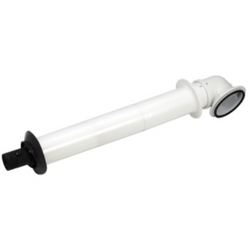
Know more about How Much Does Air Duct Cleaning Cost?
The different types of air ducts for air conditioners
Ducting is a vital component of any central air system. It is responsible for the distribution of cool air throughout the house. Choosing the right ducting will make all the difference in terms of comfort and efficiency, but how are you supposed to know which one is best? Here are the different types of ductwork for Air Conditioner:
Flexible ductwork
The ductwork is constructed from metal wire coils coated in a flexible plastic coating. Along with other materials like polyethylene or metalized PET, the flexible air duct also has thermal insulation composed of glass wool. Flexible ductwork often has no elbows or offsets, and it resembles a cube. If you have a limited amount of room, your home generally includes a flexible air duct.
Rigid ductwork
There are many different shapes, sizes, and materials available for rigid ductwork. Customers' needs can be taken into account while designing a rigid duct. They are robust, trustworthy, secure, and long-lasting. The following are the different rigid air duct types:
Sheet metal ducts
This type of ductwork is typically made of aluminum and galvanized steel, however, aluminum is preferred due to its lightweight and simplicity ductwork installation. The best benefit of having a sheet metal duct built is that you don't have to worry about harmful mold and other growths because both materials are non-porous in nature, which limits the growth of mold in air ducts.
Fiberglass-lined ducts
Fiberglass can also be used to line rigid ducts. This duct is quite similar to sheet metal ducts, however, it has an interior or exterior fiberglass lining. Due to their fiberglass construction, these ducts are preferred in commercial buildings and offices. The sound of the air conditioner can be muted by using lined air ducts.
But because these ducts can decay and leak, fiberglass walled ducts are not advised.
Asthma and other major health problems can result from prolonged exposure to these fiberglass particles. In addition, fiberglass is porous by nature, which enables the growth of mold and bacteria. Cleaning fiberglass-lined air ducts can be a challenge.
A fiberboard duct
Fiberglass is laminated with a foil layer after being squeezed and resin-bonded, creating a fiberboard. Their moisture is shielded by this lamination. For heating and cooling systems, fiberboard air ducts are typically selected since they are insulated. These air ducts, however, are not advised for ventilation since, like the fiberglass-lined air ducts, they could become a haven for mold and bacteria.
What is the best option?
Although there are other different hvac duct types available on the market today, sheet metal is the most recommended because it is non-porous by nature. It does not permit mold or bacteria to thrive in the air ducts. The possible health dangers of fiberglass air ducts can also be avoided by using sheet metal ducting. Keep in mind that regular duct cleaning will help to maintain optimum indoor air quality.
Know more about HVAC Pressure Switch - Definition, Types, And Troubleshooting
How to remove a heating duct?
A heating duct might need to be taken out of your house during remodeling. Galvanized sheet metal screws hold together heating ducts that are composed of this material. The furnace must, however, be switched off before removing a heating duct. If not, air will escape the unattached portion of the duct and make a major mess, especially if the duct is located in an attic near blown-in insulation.
Step 1: Inspect the heating duct there. There will be sheet-metal screws at each connection and each duct segment will be 4 to 5 feet long.
Step 2: Take out each sheet-metal screw from a connection on the duct segment you want to take out. The quickest tool for this job is a powered drill with a screwdriver bit, but a manual screwdriver also works.
Step 3: On either side of the connection, grab the duct. To separate the duct segment from the remainder of the duct work, pull it out and away.
Step 4: Remove the screws from the following connector after that. Similar to Step 3, remove the duct from this connection by pulling it out.
Step 5: If necessary, proceed to the following connection and repeat Step 4. Continue doing this until the duct has been taken out as far as necessary.
|
Caution: Before removing heating ducts, make sure your furnace is turned off. |
How to clean air ducts yourself?
HVAC air duct cleaning is a straightforward process requiring only a few tools. Depending on the size of your property and the quantity of air registers, the task could take several hours. Here’s how to clean air ducts yourself:
- Clean up the dust.
Use the handle of your cleaning brush to softly touch the outside of any ducting that is readily visible. Dust and filth will be made more pliable in this way. Set the fan and "on" settings on your thermostat. For a few minutes, let it continue in this manner. Any dust will be pushed closer by the air to the registers so you may clean it.
- Switch off your HVAC unit.
Using your electrical box is the simplest way to confirm that everything is off. Your furnace and AC condenser, together with the breakers connected to them, should be turned off. Additionally, set your thermostat to "off."
- Take off the vent grates.
They might just emerge. Or you might need to remove the screws first. Cover the vent aperture with a paper towel after the grates have been removed. Painter's tape can be used to hold the paper towel in place if there are vents in the ceiling or a wall.
To keep dust and debris out of your rooms as you clean, cover the vent opening with a paper towel. Put a number inside the grates if they are different sizes. In the vent, jot down the same number wherever you can see it. This will make it simple for you to later match the appropriate vent to the grate.
Make sure the grate on your air return is also removed and cleaned. It usually exceeds the other grates around your property in size.
- Keep your vent grates clean
If your grates are metal or plastic, place them all on the top level of your dishwasher and run the cycle to clean them. Before reinstalling them, make sure they are totally dry.
If your grates are made of wood or another non-dishwasher-safe material, clean them in the sink. Scrub off the dust and debris with ice-cold water. To avoid warping, dry them right away.
5. Scrub the vents.
Start with one vent. The towel cover should be removed. To remove anything like spiderwebs or dust bunnies attached to the interior of the vent, insert your cleaning brush and shake it around. Because of its lengthy brush handle, a toilet brush is advised. However, just use the brush for vent cleaning. Never use a brush that has previously been used to clean the toilet.
As far as it will go, insert your vacuum wand into the vent. Purge the area with a vacuum. Wipe as much of the vent's interior as you can using a moist rag or paper towel. Use either tap water or your preferred all-purpose cleanser.
When you're done, place a fresh paper towel over the vent. Continue cleaning the vents in your home one at a time by repeating this step.
- Clean the air return.
In your air return, remove the filter. Do not keep it. The air return can be cleaned using a cleaning brush, a vacuum, and paper towels. Just venture as far as is reasonably possible. A new filter should be used in its stead.
- Put your grates back.
Remove the paper towel covering each vent once your grates are clean and dry. Switch out the grates. To fasten them, you might need to use a screwdriver.
- Clean the blower compartment of your furnace.
Quite a bit of dust gathers here. Take off your furnace's cover to get to it. You might need a screwdriver to remove the screw.
Remove and discard the furnace filter. To clean the compartment of cobwebs and other stubborn dirt, use your cleaning brush.
Use your hose attachment to vacuum out the blower compartment. Use a moist paper towel to clean it afterwards. Alternatively, you can use your preferred all-purpose cleaner or simple water. Cleaning the furnace fan is also recommended if you can get to it.
Install a fresh filter in its place. The furnace cover must be closed and secured.
- Restart your device.
Enjoy your brand-new ducts!
Know more about Different Types Of Valves Used In HVAC Systems
How often does ductwork need to be cleaned?
The air ducts in your home's HVAC system move an incredible volume of air each day. Dust, spiderwebs, mites, hair, dander, germs, and even mold spores are just a few examples of the detritus that is carried by air. With the amount of dust inside your ducts, how often do you need to clean them?
There is no requirement to do routine maintenance on air ducts. According to the EPA, you should only clean your air ducts when necessary. Several circumstances call for air duct cleaning, including the presence of rodents or insects, visible mildew or dirt in the system, and occupants who suffer from allergies or other ailments.
The National Air Duct Cleaners Association (NADCA), a trade association, also adheres to the principle of only cleaning air ducts when necessary. But the NADCA also recommends that households have their air ducts tested once a year to see how well they are doing.
Now let us know how much does air duct cleaning cost!
How much does duct cleaning cost?
Price is heavily influenced by the size of your system, which can be determined in one of two ways:
- Your home's size will affect how much it costs to clean and how big your HVAC system has to be.
- Depending on the quantity of supply and return vents in your system, some pros will base your price on them.
Then how much does duct cleaning cost? According to the EPA and the National Air Duct Cleaners Association (NADCA), cleaning air ducts in a residential building typically costs between $450 and $1,000.
With PartsHnC, you can find cost-effective, reliable, and affordable HVAC parts and accessories online. Our HVAC parts include air filters, duct from well-known manufacturers like International Comfort Products, BASO, etc.
FAQs
How to clean fiberglass air ducts?
To clean fiberglass air ducts, use a soft brush or vacuum to remove dust and debris, and consider professional duct cleaning services for a thorough job.
How to make ductwork transitions?
Create ductwork transitions by carefully measuring, cutting, and connecting pieces using appropriate fittings, ensuring a secure and sealed junction for optimal airflow.
How hard is it to replace ductwork?
The difficulty of replacing ductwork depends on factors like accessibility and complexity, making professional assessment advisable for accurate evaluation and installation.
How long does ductwork last?
Ductwork can last 15-25 years or more with proper maintenance, but factors like material, climate, and usage can influence its lifespan.
Should ductwork be replaced after 20 years?
While ductwork lifespan varies, considering replacement after 20 years is prudent, as aging systems may develop issues affecting efficiency and indoor air quality.


